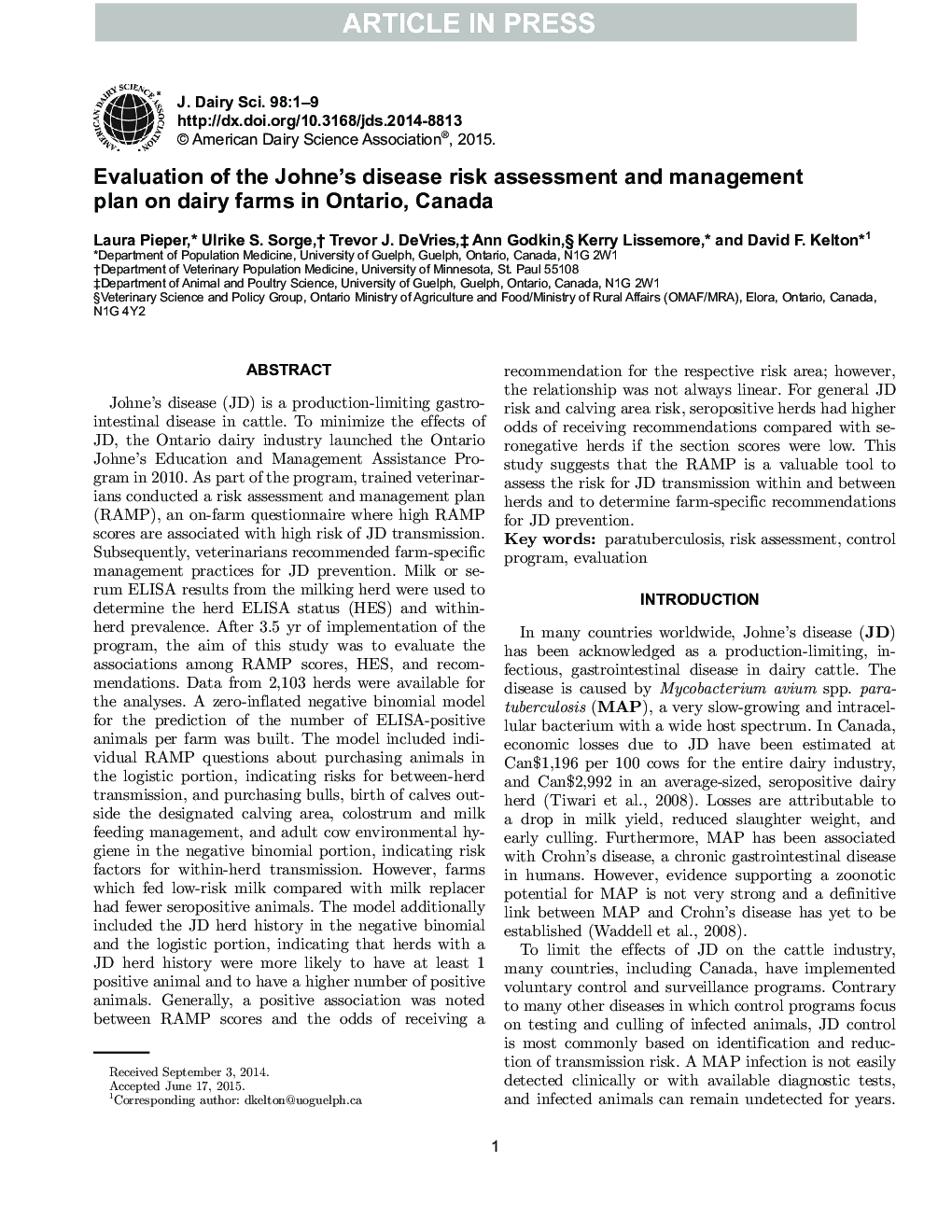| کد مقاله | کد نشریه | سال انتشار | مقاله انگلیسی | نسخه تمام متن |
|---|---|---|---|---|
| 10974865 | 1108029 | 2015 | 9 صفحه PDF | دانلود رایگان |
عنوان انگلیسی مقاله ISI
Evaluation of the Johne's disease risk assessment and management plan on dairy farms in Ontario, Canada
ترجمه فارسی عنوان
ارزیابی و برنامه ریزی ریسک بیماری یونان در مزارع لبنی در انتاریو، کانادا
دانلود مقاله + سفارش ترجمه
دانلود مقاله ISI انگلیسی
رایگان برای ایرانیان
کلمات کلیدی
موضوعات مرتبط
علوم زیستی و بیوفناوری
علوم کشاورزی و بیولوژیک
علوم دامی و جانورشناسی
چکیده انگلیسی
Johne's disease (JD) is a production-limiting gastrointestinal disease in cattle. To minimize the effects of JD, the Ontario dairy industry launched the Ontario Johne's Education and Management Assistance Program in 2010. As part of the program, trained veterinarians conducted a risk assessment and management plan (RAMP), an on-farm questionnaire where high RAMP scores are associated with high risk of JD transmission. Subsequently, veterinarians recommended farm-specific management practices for JD prevention. Milk or serum ELISA results from the milking herd were used to determine the herd ELISA status (HES) and within-herd prevalence. After 3.5 yr of implementation of the program, the aim of this study was to evaluate the associations among RAMP scores, HES, and recommendations. Data from 2,103 herds were available for the analyses. A zero-inflated negative binomial model for the prediction of the number of ELISA-positive animals per farm was built. The model included individual RAMP questions about purchasing animals in the logistic portion, indicating risks for between-herd transmission, and purchasing bulls, birth of calves outside the designated calving area, colostrum and milk feeding management, and adult cow environmental hygiene in the negative binomial portion, indicating risk factors for within-herd transmission. However, farms which fed low-risk milk compared with milk replacer had fewer seropositive animals. The model additionally included the JD herd history in the negative binomial and the logistic portion, indicating that herds with a JD herd history were more likely to have at least 1 positive animal and to have a higher number of positive animals. Generally, a positive association was noted between RAMP scores and the odds of receiving a recommendation for the respective risk area; however, the relationship was not always linear. For general JD risk and calving area risk, seropositive herds had higher odds of receiving recommendations compared with seronegative herds if the section scores were low. This study suggests that the RAMP is a valuable tool to assess the risk for JD transmission within and between herds and to determine farm-specific recommendations for JD prevention.
ناشر
Database: Elsevier - ScienceDirect (ساینس دایرکت)
Journal: Journal of Dairy Science - Volume 98, Issue 10, October 2015, Pages 6792-6800
Journal: Journal of Dairy Science - Volume 98, Issue 10, October 2015, Pages 6792-6800
نویسندگان
Laura Pieper, Ulrike S. Sorge, Trevor J. DeVries, Ann Godkin, Kerry Lissemore, David F. Kelton,
